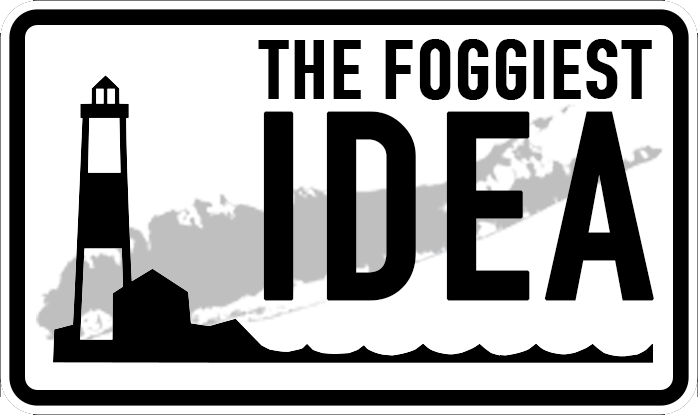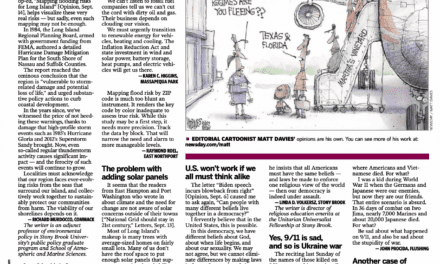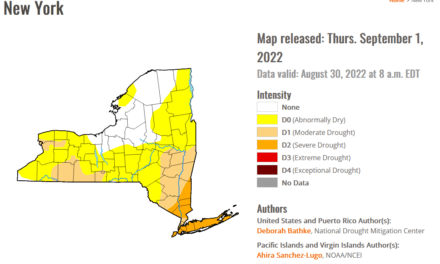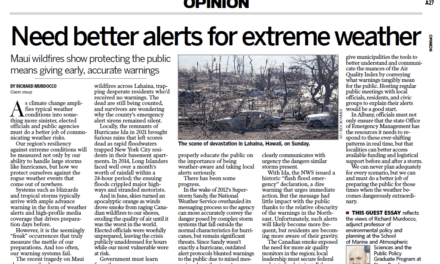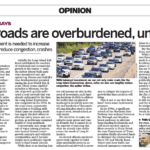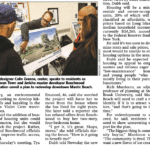Throughout the course of our daily lives, it is easy to forget that we live on an Island. Yes, the name of the Nassau-Suffolk region is “Long Island”, and yes, it is indeed long (118 miles to be exact). Did you ever actually stop and actually think about what living on an Island means? Yes, we’re surrounded by water and beaches, but there is more to it. It means that space is at a premium. Unlike the mainland, we don’t have an endless canvas to build on. Economic development is a critical function of government, a process that drives innovation and helps fill municipal coffers. Are we getting the most out of every parcel we have? Are our approaches and strategies correct?
Besides finding ways to safely evacuate if needed, our limited space should be a chief concern. We, as a region, must focus on maximizing wisely the actual, physical space we have left. Long Island’s physical space is limited by nature, and it is up to us to capitalize on developing it in the smartest way possible.
According to the Suffolk County Department of Planning, Long Island has a total of 845,762 acres of land (202,047 acres in Nassau, 643,516 in Suffolk). This figure represented the finite amount of potential our region has, and we’ve been chipping away at it for decades. To date, 86% of that total is already built up, leaving only about 118,407 acres left for us to develop in some way. According to the Trust for Public Land in a study commissioned by the Rauch Foundation and the Long Island Community Foundation, Nassau County has a mere 4,260 acres left vacant, while Suffolk has more breathing room with about 42,000 acres remaining.[1]
For scale purposes, picture your favorite big-box store (Target, WalMart, Best Buy) – that is roughly an acre in square footage (and that’s without the parking lot, roads etc). Now think about the number of big box stores you pass during your commute to work- they add up. That is my point…each structure we build detracts from the remaining acreage we have left. According to the ever-helpful Long Island Index, the region’s land use is as follows:
Source: Long Island Index’s 2012 Report
Our land use options are running out, and our regional economy isn’t exactly booming . So what do we do? Is it possible to boost our economy given the physical constraints the region has? Yes.
First off, we should stop building on prime open space and start redeveloping vacant sites and blighted parcels. “Smart Growth” isn’t exactly smart if it’s in the middle of nowhere, or if it is built on top of untouched open space. Further, the term “mixed-use” is poised to win “Buzzword of the Year” for 2013. Mixed-use developments only work if the mixed uses are compatible. Can the residents in the development afford to work in the commercial uses being proposed? Despite what new-age planner types will say, we need to collectively remember that Euclidian-zoning still has its merits: It prevents conflicts of land use. An example: residences should not be located near industrial properties. The land uses simply are not compatible. In looking to new approaches, we also must remember the validity of the old ones as well.
Next, we need to start building to Long Island’s strengths. The approach that Mark Lesko and Accelerate Long Island is taking has merit. They are actively striving to turn our economy into the next Silicon Valley. This approach capitalizes on our research centers and intelligent and skilled workforce. However, we have to be careful not to directly compete with New York City’s strategies. Our regional economy should not try to emulate the approach New York City’s Economic Development Corporation is taking, but rather both complement and supplement their economic development efforts. We are suburban, in some parts of the Island even rural, and should use our acreage to accommodate light, green industrial uses that need the space that the urban environment of New York City cannot provide companies. This would give us a competitive edge over older suburban areas like Westchester, where like Nassau County, the land use patterns are already physically set.
Our open acreage is dwindling. Our economy needs an innovative approach to bring us out of the recession, and keep us competitive with other aging suburbs. It is imperative to use the remaining 118,000 acres to balance open space preservation and aquifer recharge, affordable housing development and economic growth. Sound planning is the balancing act of social, economic and environmental forces. These often conflict. It is our job, as a region, to ensure we assign the best possible uses for these acres, and to maximize the open spaces we have left. Remember- it is much easier (and cheaper!) to prevent a mistake than it is to rectify one.
[1]Trust for Public Land: The Economic Benefits and Fiscal Impact of Parks and Open Space in Nassau and Suffolk Counties, New York
